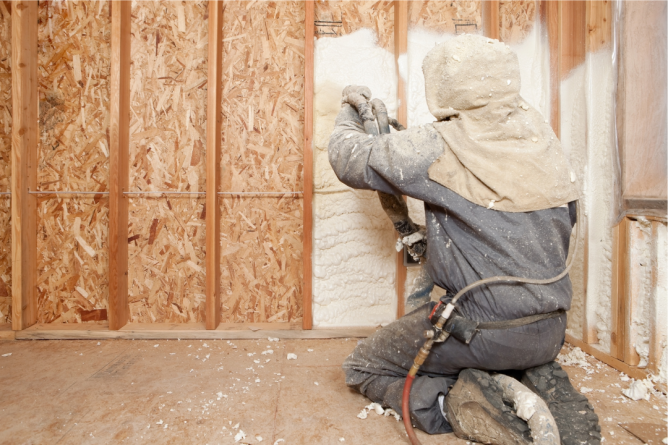Spray Foam Insulation is not new, it’s been used in homes throughout the UK since the 1970s and is still available through the Home Energy Scotland Grant funded by the Scottish Government.
With the increase to the cost of living in recent years, including the significant price hikes of home energy costs and a focus on greener living, many homeowners have looked for ways to improve the energy efficiency of their properties by installing insulation, and Spray Foam has looked like a speedy and cost-effective way of doing that.
There are two types of spray foam, Open Cell and Closed Cell, and it’s called Spray Foam because of the way it is applied, essentially it’s expanding foam sprayed on to structural surfaces under pressure, usually to a depth of around 300mm. Closed Cell spray foam sets as a rigid, vapour barrier and therefore offers better insulation than Open Cell, which remains soft and isn’t as prone to condensation.
However, over the past 18 months concerns about all Spray Foam Insulation have grown, mostly due to poor or incorrect installation leading to significant building defects including deterioration, rot and decay caused by Spray Foam preventing the necessary air circulation and condensation escape throughout a building, most notably in roof spaces. This has led to many mortgage lenders considering properties with any Spray Foam unsuitable for mortgage or equity release purposes. If the presence of Spray Foam is noted by surveyors, then regardless of type, when or who it was installed by, it will simply not be considered by for lending – mortgage brokers report that it is akin to a blanket ban on Spray Foam.
This obviously presents a huge issue for those with Spray Foam who are looking to sell their property. Whilst your own lender might be ok with it, restricting who your buyers can borrow from or reducing the pool of buyers to those who can pay in cash is not a good strategy for getting the best selling price. Surveyors will note the presence of Spray Foam in the Home Report and that could be off-putting to buyers regardless of what mortgage borrowing they might need given the publicity surrounding Spray Foam, the problems it can cause and the cost of removing it.
Removing Spray Foam can be costly with trades website Checkatrade reporting that the average cost of removing it from the roof space of a three bedroom detached home is approximately £3200.
Our current advice (December 2023) is that if you’re looking to sell a home that has Spray Foam Insulation it would be best to get it removed prior to instruction of the Home Report and to keep carefully any paperwork you have relating to the installation and removal.
If you’re not planning on selling anytime soon and you are considering installing Spray Foam Insulation in your property then we would recommend speaking to your local authority to check if you require any building consents to do so, contacting your mortgage lender and insurance company to check they’ll be ok with it and then instructing a reputable firm who are Trustmark or Green Deal registered who will provide you with detailed paperwork on exactly what has been installed.
The situation around Spray Foam is evolving and most of the scientific evidence around it has been produced by the manufacturers and installers of Spray Foam which understandably the mortgage lenders are reluctant to trust. Once further unbiased and independent reviews of Spray Foam Insulation have been carried out, it may well be that the lending policies around Spray Foam will be relaxed, but at this point in time the presence of Spray Foam Insulation is an impediment to the sale of properties in Scotland.
For further advice and information on selling your property, contact our professional and proactive team on 0131 625 2222 or book your free consultation.

